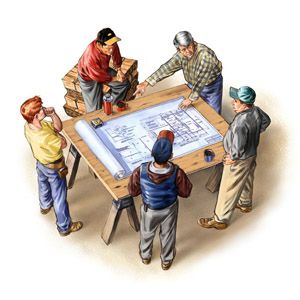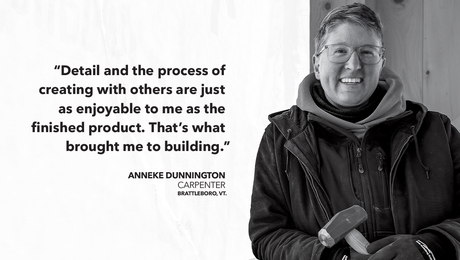Run a Successful Construction Company
Three simple ideas that protect your business, save you money, and keep you organized

Great craftsmen are notorious for being poor businessmen. It’s a shame really, because there is plenty of money to be made in the trades. But running a business is running a business, and if you plan to go out on your own as a tradesman you need to be organized. I’m no Donald Trump, but I’ve done well as a builder. Here are a few tips that have helped me save time and money and protect my business.
One picture saves a thousand words
As the home-building business is becoming more litigious, record keeping is becoming more important. A daily job log maintained by a lead carpenter or project superintendent provides an important record of what happened on a project, and may provide valuable information for settling disputes. But keeping a daily log can be cumbersome and distracting from the physically and mentally intensive work of building.
To ease the burden on my superintendents and myself, I supply and encourage the use of disposable cameras and mini-cassette recorders. As work progresses, snapshots and recorded briefs document the job. I collect the cameras and tapes weekly. To save money, I develop negatives, but I don’t have them printed. I store the mini-cassettes, without rewinding (this helps preserve the tape), in small envelopes that are dated and stapled to the inside jacket of the job file
These photographs and field memos provide a less burdensome and sometimes more accurate means to memorialize a job. In the unlikely event that this documentation is needed to resolve a dispute, I print the photos and hire a legal secretary to transcribe the tapes.
To cut costs, split the money
To encourage my employees and subcontractors to be aware of costs, I offer them half of any money-saving ideas they propose. Even if the suggestion only saves ten dollars, I give them five. A few pennies saved here and there can add up to a few hundred dollars by the end of the year for me and extra earnings for my employees and subcontractors. Here’s an example of the benefits of this program.
My electrician suggested moving a doorway 12 in. to eliminate the need for one plug. The plug costs $55. Therefore the suggestion was going to save me $55, but also lower the electrician’s earnings on the job by that amount. However, he knew that because of my savings-sharing plan he was now going to make $27.50 on each job for doing nothing.
That was five years ago. Since then, I have built this particular plan about 15 times each year. Therefore this simple suggestion has earned each of us nearly $2,000 to date. If you multiply this kind of savings by each trade, you’ll understand how even the smallest cost-saving suggestions can add up to big bucks.
Of course not every suggestion is a good one. The idea has to be practical, measurable and reproducible on future projects. The incentive, however, is enough to keep my help vigilant.
Three desks for better organization
Though I run a small home-building company that requires a clerical staff of only one — me — I separate my workspace into three administrative centers, each with its own desk and computer. This system increases my efficiency and keeps my office organized and my desktops clutter free.
I arrange bidding, accounting, and administration into three separate departments, each with its own station. Each station is outfitted with files, phone numbers, and tools relevant to the duties performed there.
I review plans at the bidding desk, which has drafting tools in a drawer, an electric eraser on the wall and plenty of working surface. There’s a shelf on the wall where I store blueprints, and a bookshelf stacked with estimating books, supplier manuals, and other reference tools useful for bidding.
At the accounting desk, I have a large drawer with invoice folders for each job. At this station I organize payroll, accounts receivable, and accounts payable. Here I also sort invoices according to pay dates and ledger printouts and other filing into trays stacked on shelves above the desk. This filing system allows me to sort mail without wasting valuable time determining where to put it.
In the center of my office is the largest desk, where I spend the most time. This is the administrative desk where I make phone calls, meet with clients and arrange deals. I keep 11-in. by 17-in. versions of the plans for all current projects in the file drawer next to me for quick reference when a subcontractor calls with a question. Within rolling-chair distance is a bank of cabinets containing files for all of my jobs in the past two years.
By networking my three departments electronically, I can access computer files from any desk. But I only display icons on my computer screen for the software I use most at each station. This keeps my computer desktop uncluttered as well, and helps me focus on the tasks at hand.
Fernando Pagés Ruiz is a builder in Lincoln, Nebraska. Illustration by Matt Collins.
Fine Homebuilding Recommended Products
Fine Homebuilding receives a commission for items purchased through links on this site, including Amazon Associates and other affiliate advertising programs.

Graphic Guide to Frame Construction

Pretty Good House

All New Bathroom Ideas that Work

























